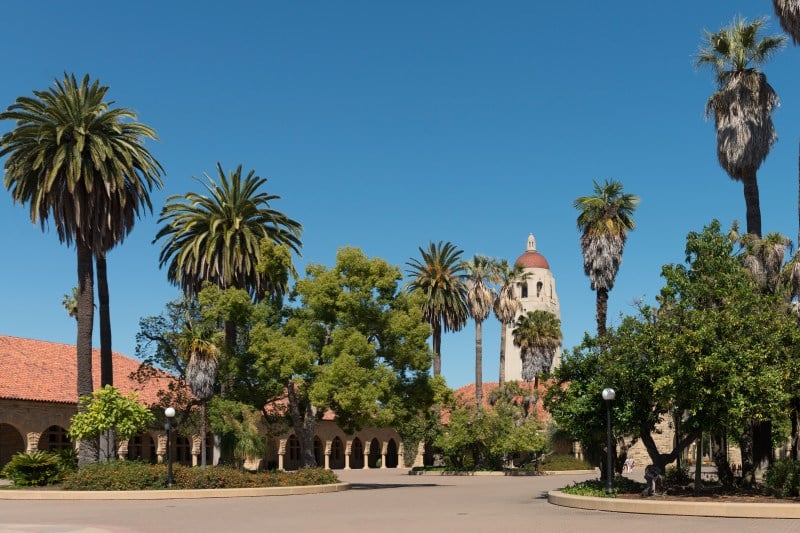An undergraduate has tested positive for COVID-19, and nearly all undergraduates must evacuate campus by Wednesday at 5 p.m., University President Marc Tessier-Lavigne wrote in an email Friday evening, in a reversal that came after new restrictions on public gatherings from Santa Clara County Friday morning and President Donald Trump’s declaration of a national emergency Friday afternoon.
The undergrad who tested positive is self-isolating, Tessier-Lavigne wrote, confirming the first known case of the virus in an undergraduate student. Three cases, including two at Stanford Medicine, had been announced previously.
The “provost is asking” instructors to make final exams for undergraduates optional, Tessier-Lavigne added. Earlier on Friday, an email from Provost Persis Drell and Vice Provosts Sarah Church and Harry Elam addressed to “winter quarter faculty and instructors” said it was “essential” that their final exams be made optional.
After Wednesday, only a “very limited” number of students “who have no other option than to be here” will be allowed to remain on campus, according to Tessier-Lavigne.
“We will be prioritizing international students who cannot go home; students who have known severe health or safety risks; and students who are homeless,” he wrote. “We are also planning to allow a small number of our residential staff who do not meet the previous criteria to remain on campus.”
The University is evaluating students’ previously submitted requests to stay and will inform students by Saturday at noon if they will be allowed to remain on campus.
Students receiving financial aid will be able to receive financial support for both travel and living expenses, according to the email.
Beginning Saturday, all dining halls will serve students pre-filled to-go containers and bottled or canned drinks. Only a limited number of students will be allowed in the serving area at once, and students will need to leave the dining halls to eat.
Gatherings of 35 people or more are now prohibited, but if a group believes such an event is “essential,” they can seek approval from Stanford Environmental Health & Safety, Tessier-Lavigne wrote.
Students who stay on campus for spring quarter will face a number of actions to reduce the risk of infection spread.
“There will be no programming for students, including no social events or parties; dining options will be limited; you may be asked to change residences; gyms and recreational centers will be closed; and students staying will be expected to remain on campus and not bring guests from off-campus,” Tessier-Lavigne wrote.
He added that the University will allot a time later in the spring for students who have already left campus to retrieve their belongings, “if in-person classes do not resume during spring quarter.”
Tessier-Lavigne also encouraged Stanford employees –– including graduate students and postdoctoral scholars –– to work remotely as much as possible “in a way that still supports the necessary operations of the University.”
Prior to the announcement, Stanford’s precautions to protect the community from virus transmission included banning all University events larger than 50 people, suspending all varsity athletic activity, transitioning spring quarter courses to a virtual format, halting all University-sponsored international travel and urging all undergraduates not to return to campus “until further notice.”
Despite those measures, Stanford had allowed dining halls and dormitories to remain open as usual. The University had also told students they were “welcome” to remain on campus during spring quarter after completing a housing registration survey, with a deadline of this past Thursday at 5 p.m. The University continues to suggest that moving out of on-campus housing may be only a temporary measure.
Though the University is asking many undergraduates to return home, its website includes the following advice on COVID-19 from Stanford Medicine: “Quite simply, the advice is not to get on an airplane, and even to avoid groups of people altogether.”
On Friday, the Santa Clara County public health department issued an order banning gatherings of over 100 people, imposing restrictions of gatherings of over 35 people and closing county schools. The order –– effective at midnight on Saturday –– was prompted by the increasing number of confirmed cases in Santa Clara County, which tripled over the last week to a total of 79.
A gathering is defined as “any event or convening that brings together people in a single room or a single space at the same time,” including meeting halls, cafeterias and restaurants, said public health director Sara Cody in a press conference.
“These new restrictions, which apply to cafeterias as well as other spaces, will make it very difficult to sustain our undergraduate dining operations at scale for an extended period of time,” Tessier-Lavigne wrote.
“As I noted earlier this week, the highly communal nature of our undergraduate residential and dining spaces makes them fundamentally incompatible with the concept of social distancing,” he added.
In his email, Tessier-Lavigne wrote that the University “had hoped our intermediate steps would be sufficient, but it is clear that we need to take a next wave of actions to help slow the spread of COVID-19 in our community.”
“These are very difficult actions to take, but we are asking individuals to make deep sacrifices for the good of those in the community who are most vulnerable to the threat of infection,” he wrote.
Contact Alex Tsai at aotsai ‘at’ stanford.edu.
